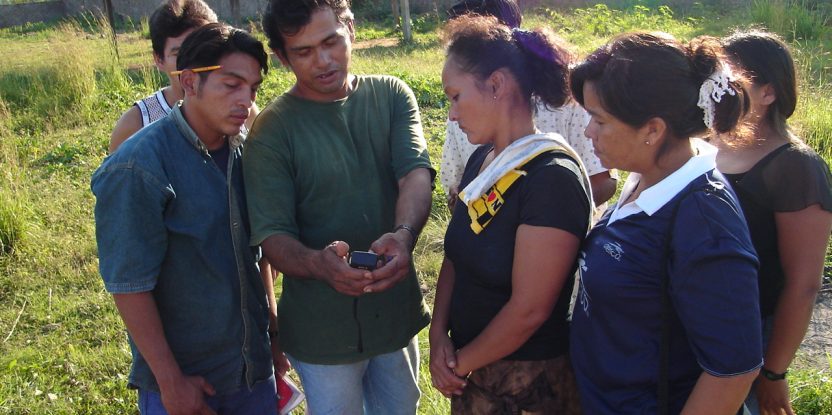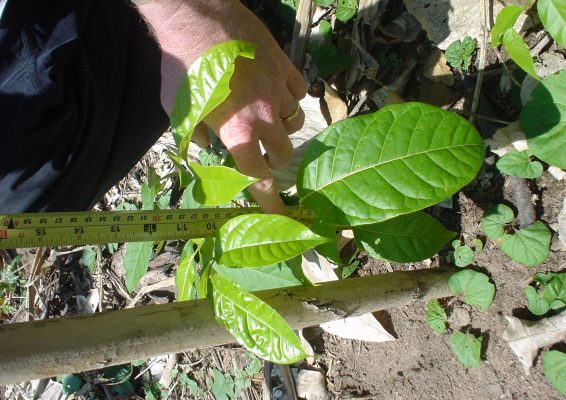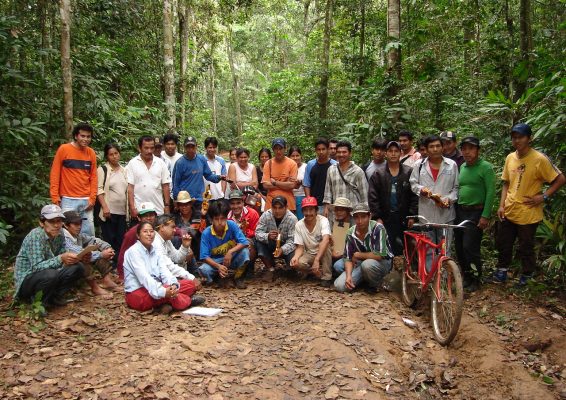
150 million hectares of degraded land – an area the size of Alaska.
That’s what governments around the world have pledged to restore by 2020 under the Bonn Challenge. But if those forests are to survive longer than a year or two, local communities must be involved in monitoring them on an ongoing basis, scientists say.
“If it doesn’t matter to the local people, then failure will be the norm,” says Kristen Evans from the Center for International Forestry Research (CIFOR). “There might be a whole lot of tree planting going on, but it will result in a bunch of dead trees.”
In a new paper, Evans and colleagues outline the case for connecting global plans to local priorities by getting communities involved in setting goals for forest restoration projects, measuring progress against them, and then sharing and learning from the results with decision-makers at various levels. This process is called participatory monitoring.
Current targets for forest landscape restoration are largely top-down, says CIFOR Principal Scientist and co-author Manuel Guariguata. “But restoration starts on the ground.
“These government-driven plans are implemented in most cases by local communities. Even if it’s a simple tree-planting scheme, they will be the guardians. If it’s to their advantage, they will fertilize the trees, they will water them – and if they don’t have a stake, they won’t.”
Previous studies have shown that local people can collect accurate data on forest cover change (and the reasons behind it) as well as socioeconomic impacts for around a third of the cost of hiring professionals.
Participatory monitoring can also provide crucial real-time information about whether or not a project is working – and even more importantly, why.
“If you only measure from space, no one will be able to figure out why your plantings did not survive,” Guariguata says.
If it’s to their advantage, they will fertilize the trees, they will water them – and if they don’t have a stake, they won’t


LET’S GET TOGETHER
Stories about participatory monitoring often focus on the innovative technology that allows forest communities to collect data – GPS, smartphones and social media.
But the real power of the technique lies in something deceptively simple, Evans says: humans getting together and talking, doing and learning from one another.
“We call this social learning, and it only happens when you get groups of people together,” says Evans. “It helps break down barriers, and people are more likely to understand each other’s point of view.”
One of the few restoration initiatives that has implemented participatory monitoring in multiple sites is the U.S. Forest Service’s Collaborative Forest Landscape Restoration Program.
The program brings conservationists and loggers together to collect data, Evans says.
“These were people who never talked, who saw themselves on opposite sides of so many issues – but when they actually worked together and solved problems, much of the conflict disappeared.”
Carrying out fieldwork can also give a voice to people who might be marginalized in a traditional meeting setting, Evans says.
“Men tend to dominate meetings. But when you get everyone out in the forest counting and measuring trees, women often assume an equal footing – not just in doing the work, but participating in discussions and giving their opinions. You end up with a much more diverse range of views being expressed.”
STAYING MOTIVATED
A key lesson from the literature is that participatory monitoring needs to be prioritized and well-funded from the start, says Evans – not treated as an afterthought.
“Social learning takes time, logistics and money, because you’ve got to get people together. You’ve got to organize this stuff, or it’s not going to happen.”
It’s also an ongoing commitment. “People just don’t keep monitoring on their own,” says Evans. “It takes a motivating incentive from the outside – that’s the reality, and it’s going to have to be budgeted in.”
There is no one-size-fits-all monitoring system that can be applied across the board. Project leaders need to devise their strategy alongside the community at the outset – but at the same time, there needs to be some consistency. Having too many indicators for success can get unwieldy.
So, what works?
“Keep the goals simple, help people figure out at the local level what questions really matter to them, respect their time, and motivate people to get involved by listening to what’s important to them,” Evans says.
“The selection of indicators comes later,” says Guariguata.
It’s also important to process the collected data as soon as possible so that any mistakes can be quickly identified and addressed.
People just don’t keep monitoring on their own. It takes a motivating incentive from the outside – that’s the reality, and it’s going to have to be budgeted in
THE TIME IS NOW
With dozens of countries committing to restore millions of hectares of degraded forest land in the next few years, funding for participatory monitoring needs to be made available now, says Evans.
She advocates setting up around 20 pilot sites in forest landscapes restoration initiatives worldwide.
“We just need to start doing it on a small scale, where we can make mistakes and learn from them. Enough meetings – let’s go out and do it.”
We want you to share Forests News content, which is licensed under Creative Commons Attribution-NonCommercial-ShareAlike 4.0 International (CC BY-NC-SA 4.0). This means you are free to redistribute our material for non-commercial purposes. All we ask is that you give Forests News appropriate credit and link to the original Forests News content, indicate if changes were made, and distribute your contributions under the same Creative Commons license. You must notify Forests News if you repost, reprint or reuse our materials by contacting forestsnews@cifor-icraf.org.